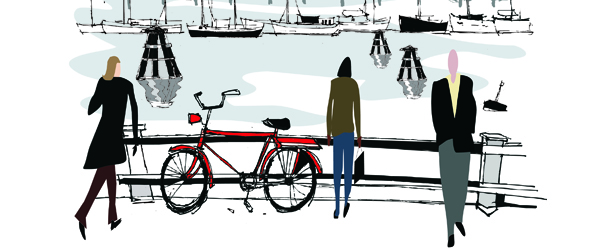Overseas distribution is nothing new to Brompton; the company has exported a fair proportion of its output almost from the outset. First conceived by Andrew Ritchie in the mid-1970s, full-time production didn’t begin until 1987; yet by the turn of the decade Bromptons were being delivered to the Benelux and Germany, two markets that remain important to this day. As in the UK, where only the most intrepid of independent bike shops were taking on this ground-breaking (and unfashionable) product, these markets weren’t targeted by the company; entrepreneurial people approached Andrew in his railway arch in Brentford with a request to distribute this brilliantly-designed and manufactured bike in their countries.
Fully engaged in the challenges of managing his nascent enterprise and in the further development of the bike, Andrew was happy to hand over distribution rights to people who convinced him they understood his priorities of product support and no-pressure sales.
By the mid-90s, Brompton found itself with a small but growing network of distributors. The company had fallen into the distributor model for want of in-house overseas experience and a lack of time to engage in distribution. But it was also the best solution for the business then, and remains the superior approach in most markets today. Employing a distributor to oversee the marketing and distribution of products in a territory comes at a cost of lost margin, but it also allows the business to benefit from the linguistic and cultural knowledge of the go-between, along with the business connections that person brings; generally-speaking it’s a lower-risk, lowermargin approach.
As the Brompton brand has gained recognition, the need to employ distributors to oversee market development has declined and the company has replaced the distributor model with a dealer-direct approach in the Anglophone territories: USA, Canada, Ireland and Australia. But the decision is not straightforward. In the absence of a distributor, North American dealers are supported by two Brompton employees based in Portland and Oregon, in addition to receiving a large degree of support from the Brentford HQ in the form of management time and financial backing. And Australia – where the distributor withdrew – is a territory where they are keen to reintroduce distribution; it is too distant to be effectively managed from the UK and too small to warrant an agent.
In most markets, therefore, the distributor model remains the superior conduit for the exports that now account for three quarters of Brompton’s output. This is particularly true of the Asian markets where the cultural, linguistic and economic differences are too great to manage without indigenous marketing, logistics and technical support.
Japan had shown interest in the Brompton as far back as the early 1990s, prompting the company to embark on an ill-fated alternative distribution chain: a joint venture in Taiwan that manufactured Bromptons under licence and shipped direct to Asian distributors, starting with Japan.
Unfortunately, no amount of training could prevent the partners from taking shortcuts with the manufacturing, resulting in products that bore a superficial resemblance to the Brentford Bromptons but whose hinges and other critical parts were shoddily produced and assembled. The JV came to an official end after ten years, though it had ceased to produce Bromptons in any meaningful quantities long before. At termination, the partners failed to return a number of drawings and jigs, articles subsequently employed to manufacture Brompton clones under a variety of names; this in turn forced Brompton to pursue a number of costly, if successful, law suits for copyright infringement. The experience taught their management the importance of retaining control over manufacturing know-how. Meanwhile, Japan, like the rest of Asia, was supplied from Brentford and has today become the company’s largest export market.
The business now attracts more interest from prospective distributors than ever, and the appointment process is more organised; when a market is deemed ready, discussions with all collected named parties begin, often involving a market visit. Sometimes, as with the recent appointment of distributors for Brazil, Argentina and Chile, assistance is sought from UKTI to arrange further introductions or for the preparation of a market report. But the distributor model is being shunned in one market they’re about to enter; China. Uncertainties over the Chinese market have persuaded them to embrace a “third way”; namely a retail joint venture with trusted local contacts, resulting in a stake in a shop in Shanghai.
It’s a long way from Andrew’s hands-off approach in the 1980s but the varied nature of global markets means that flexibility is a prerequisite for all exporters. It also reflects the fact that the business has achieved – after 25 years – a certain international standing, for which its distribution network may claim much of the credit.
Share via:


















































